Contents
Hercules onion sets are planted in the spring, and after 2,5-3 months, weighty, long-stored heads are harvested. When growing, they comply with the requirements of agricultural technology, water and feed the plantings. Gardeners themselves sow branded hybrid seeds to obtain high-quality seedlings.
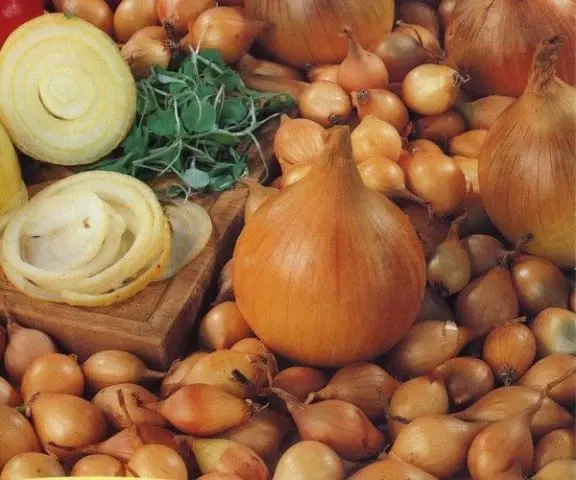
History of variety breeding
This is a mid-early hybrid of the Dutch selection from Bejo Zaden BV. It has been included in the State Register since 2006. It is recommended to cultivate Hercules f1 in the regions of the Central Region. Hobbyists grow a high-yielding onion variety almost everywhere because of its excellent preservation until spring.
Description of the onion variety Hercules
A hybrid in the first generation onion Hercules, the variety is also called Hercules, is a two-year heat-loving culture. In spring, seeds are sown, which by autumn form small onions, sets, for planting in the next warm season. The root system of the variety is powerful, with long shoots, due to which the crop develops well even in the dry season, although this reduces the yield. A few feathers 35 cm high are juicy, dark green in color. Mature heads are elliptical in shape, on average, from 120 to 160 g, with a neck of normal thickness. A dry, yellow-golden husk surrounds the bulbs in three to four layers. The inner scales are juicy and thick, white in color, with a snug fit.
The heads are mostly single-bud, there are also two seedlings. There are few leaves, which contributes to a better weight gain in the bulb. To taste, the Hercules variety is spicy, but without pronounced bitterness. Dry matter is 15%. The onion variety Hercules is one of the best for industrial cultivation.
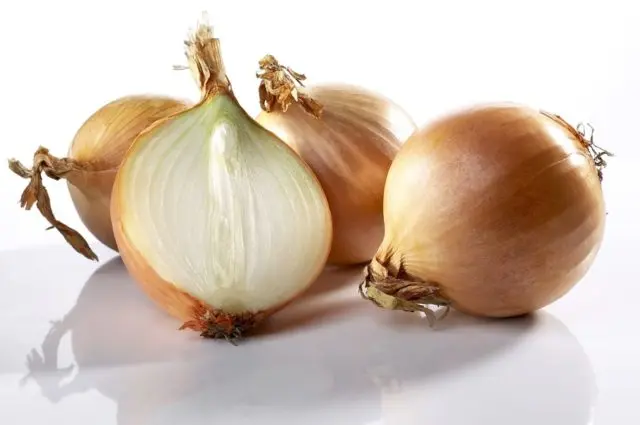
Sevok Hercules: description
A high-quality set of hybrid Hercules should not exceed 21-24 mm in diameter in size. Hercules bulbs in the photo look like large round-oval heads in shape. There are rudiments of roots on the bottom, the neck is dry, without seedlings. The upper scales are of a golden hue, folded in several layers around the head of the set. Bulbs are uniform in shape and size.
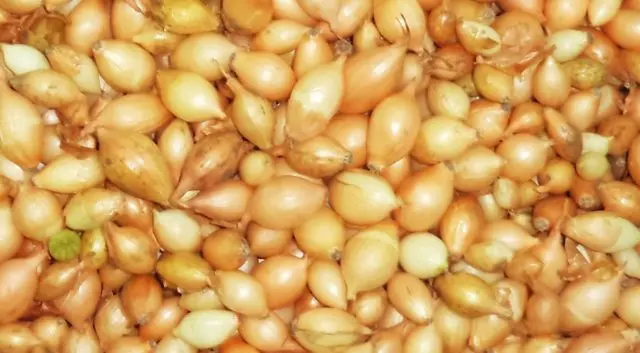
Onion sets Hercules: characteristics
Selected Hercules onion sets with yellow upper scales without spots and damage give a high yield of large heads that are stored for a long time.
Productivity
After the April or May planting, Hercules sets develop in 75-85 days. The heads are dug up when the leaves have withered. Depending on the nutritional value of the soil, timely watering and top dressing, bulbs weighing from 80 to 200 g grow. For a good harvest, the site is prepared in the fall, introducing the necessary minerals and organic matter. Given the time of planting Hercules sets, ripe onions are chosen in August. The variety gives from 1 sq. m 7-8 kg of juicy heads. Without fertilizing from onion, Hercules f1 sets, according to reviews, grow 5-6 kg, which is an impressive result.
Disease and pest resistance
The hybrid is resistant to characteristic onion diseases, so the heads develop well. Also, the bulbs lie for a long time without being infected with diseases. But if the seed of a high-yielding variety was purchased from the hands, it should be soaked in disinfectant solutions before planting. The procedure will clean the onion from insects and infections. Pests are fought with folk remedies. It is important to observe crop rotation, do not plant plants in the same areas. Insects can overwinter in the ground and develop on new plantings.
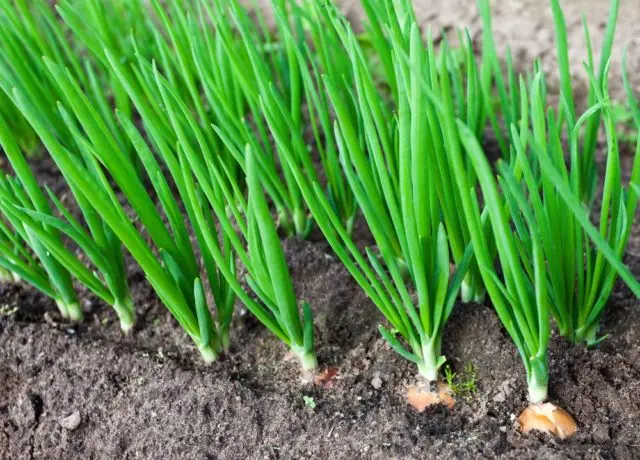
Advantages and disadvantages of the variety
Numerous descriptions with photos of Hercules onion sets confirm that this is one of the best varieties. The advantages of a hybrid are obvious:
- precocity
- high yield;
- excellent commercial performance;
- duration of storage;
- resistance to the formation of arrows;
- drought tolerance;
- resistance to pathogens.
Summer residents in reviews of onion sets Hercules also point to a drawback: you cannot grow your own seeds from a hybrid, which are quite expensive in specialized stores.
Planting and care for onions
The Hercules variety reveals its potential under the condition of timely planting and proper cultivation. Sevok is prepared for planting by soaking in salt solutions, potassium permanganate, blue vitriol, industrial special preparations to remove possible pathogens and pests. Spores can get into the set in case of improper storage in the store, if the planting material is not sold in branded packages. Seeds can be infested with pests in a previous plot if they are bought from the market.
Predecessors are also taken into account:
- onions successfully develop after tomatoes, eggplants, potatoes, lettuce, spinach, gourds;
- do not plant where garlic, corn, carrots, sunflowers grew.
Planting dates for onions
Following the description of the variety, Hercules onion sets are planted in the garden when the soil warms up to + 10 ° C – from early April to mid-May.
Is it possible to plant Hercules onions before winter
Seeds of this variety are planted in the fall to get a crop by the end of July, beginning of August. Onion Hercules before winter is placed on the site approximately 17-20 days before the onset of frost. It is important to choose the time so that the sevok does not begin to germinate. In the cold, his delicate feathers will freeze, which will adversely affect the condition of the entire bulb. For the winter planting of the variety, the smallest set is chosen. Bulbs will start their development early and will provide a good harvest. The bed is mulched with dry grass, sawdust with a layer of up to 10-12 cm.
Preparation of beds
How to choose and enrich a place for the Hercules variety:
- a site for an unpretentious, but thermophilic onion is chosen sunny, unshaded;
- should not be planted in lowlands where moisture accumulates after precipitation;
- onions like neutral sandy loams, loams and loose chernozems, light, enriched with nutrients;
- for autumn planting, when digging up the site, only 500 g of wood ash per 1 sq. m;
- for spring work in the fall, 35 g of superphosphate, 15 g of potassium chloride, half a bucket of humus, but not manure, are added;
- in April, 15 g of urea or 12 g of ammonium nitrate are added to the soil.
Landing onions
According to the characteristics of the Hercules onion, the heads grow large, the sets are planted according to the scheme: between rows 30 cm, holes – 15 cm. The soaked sets are dried and placed at a depth of 5 cm.

Growing onions
Onion variety Hercules from sets, according to reviews, does not require daily care:
- watered two to three times a week in June and early July;
- after July 16 or August 1, the feathers fade, watering is stopped;
- the soil is loosened by 2-3 cm;
- weeds are removed.
The onion variety Hercules is fertilized 3-4 times, watering with top dressing 5 liters per 1 sq. m:
- In the spring, when the first shoots appear, 10 g of urea is dissolved in 20 liters of water.
- After 2 weeks, 10 g of nitrophoska is diluted in 40 liters.
- Then apply phosphate-potassium fertilizers.
Harvesting and storage of crops
When the neck dries up and closes, the onion is dug up with a pitchfork, the feathers are cut off. The heads are dried for 4-5 days, then they are placed in a container with loose walls. Store in cool and dry rooms.
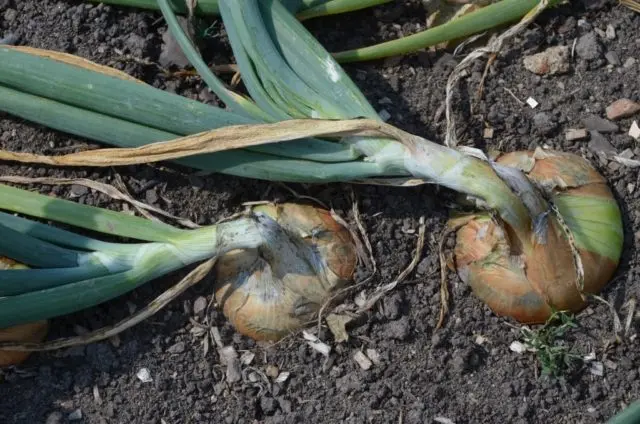
Ways to propagate onions
Seeds of the variety are sown in the soil in spring, in July they receive conditioned sets. The bulbs are dried, freed from the remains of feathers and stored at a temperature of + 5 °C to + 15 °C. In spring, seedlings are planted to form heads.
Diseases and pests, methods of control and prevention
According to the description, the Hercules onion is not susceptible to disease. The variety is harmed by an onion fly and a tick, tobacco thrips, which are repelled by ash or saline, neighboring carrot plantings. Plantations use insecticides. For the prevention of seedlings, they are treated with disinfecting infusions.
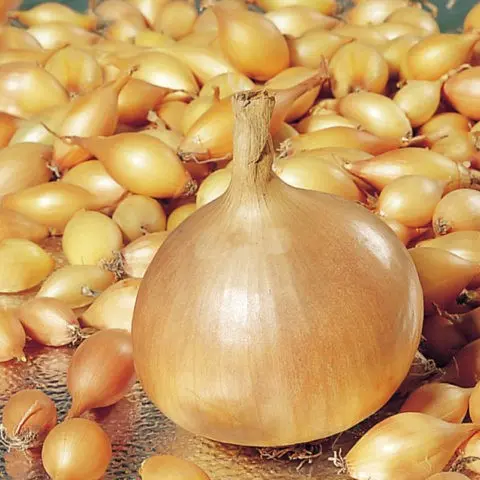
Conclusion
It is important to plant Hercules onion sets on time, having treated them with disinfectants. Watering and fertilizing will ensure the formation of large heads. The variety is soft and keeps well until spring.









